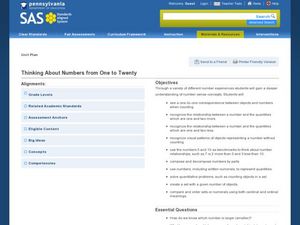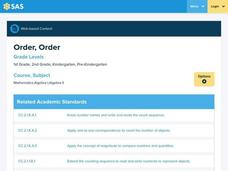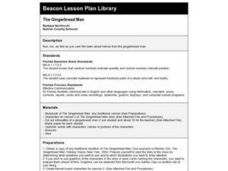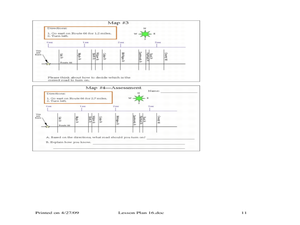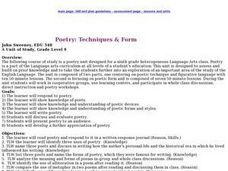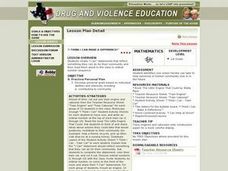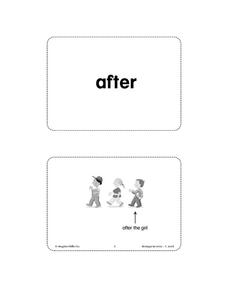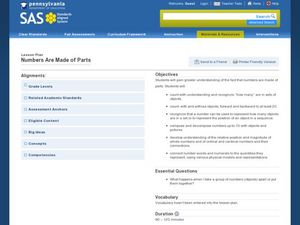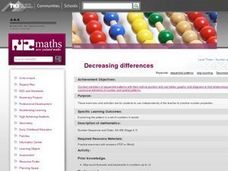Curated OER
Ordinal Numbers: Match 4
In this ordinal numbers and ordinal names worksheet, students match the 10 listed ordinal numbers to the 10 listed ordinal names.
Pennsylvania Department of Education
Thinking About Numbers from 1 to 20
Help your kindergarteners discover new number-sense concepts and to compose and decompose numbers. Though the resource contains no procedural details, the assessment tool (which you can find in the "printer friendly version") has...
Curated OER
Numbers in Spanish
Spanish learners can start with uno, dos, y tres and move all the way up into the millions and trillions on their way to learning all the numbers. The webpage includes information on cardinal numbers, ordinal numbers, fractions, and...
Curated OER
Anchoring Numbers to Five and Ten
Students complete activities to relate numbers to each other. In this number connection lesson, students count number sets, count forward and backward, and complete other number recognition activities to learn how numbers are related.
Curated OER
Describing A Place - Part I The British Isles
In this describing place worksheet, students label the cardinal and ordinal directions on a compass rose using the drop-down menus. They complete a matching activity by matching an item from column C with one in A and B. They read an...
Curated OER
ESOL: Time and Money
Students study time and money. They read and practice cardinal numbers using numerals and words. They collaborate in apirs and exchange flashcards identifying cardinal numbers 0-10. They complete an activity sheet and show pictures and...
Pennsylvania Department of Education
Order, Order
Students use pictures to identify items as ordinal numbers. In this ordinal numbers lesson plan, students use the words "before" and "after" to identify the pictures as well.
Curated OER
Calendar Based Activities
Students match ordinal numbers with their written word. They sequence the days of the month on a calendar. They practice saying ordinal numbers. They find specific dates on a calendar.
Curated OER
Uses of Numbers: Reteach
In this ordinal numbers activity, students read about using numbers in different ways-count, measure, label, and show position. Then students answer six questions identifying how numbers are being used.
Curated OER
Uses of Numbers: Homework
In this numbers worksheet, students read about different uses of numbers-to count, measure, label, and show position. Students answer seven questions labeling how numbers are being used.
Curated OER
The Gingerbread Man - Cutting in Half
Students use the gingerbread man that they made earlier in the day. They demonstrate how to cut the gingerbread man in half, leaving two fair shares or two pieces the same. The gingerbread man pattern is imbedded in an attached file in...
Curated OER
Declaration of Independence
Students define the words: republic, Articles of Condederation, survey, Northwest Ordinance, republicanism, ordinance, ratified, and Northwest Territory. They view the video Charlie Brown Constitution.
Curated OER
Understanding Fractions
In this recognizing fractions worksheet, learners observe explanations and examples of pie charts and bars and use them to color, write the fraction of the shaded part, and draw and color pie charts. They will solve thirty-two problems.
Curated OER
Exploring County Ordinances
Students discuss the purpose of county ordinances and view actual examples. In groups, they take the ordinances and describe how they are to protect the citizens of the county. They also discuss how interest groups affect policy making.
Curated OER
Where Should You Turn?
Fourth graders complete activities to study decimal numbers. In this decimal numbers lesson, 4th graders study decimal numbers to express numbers less than one and intervals. Students complete map and location activities to study the...
Curated OER
Things in a Line
Little learners recognize symbols, objects and how to depict numbers. In this matching lesson, they can match the number names with a set of items, model ordinal numbers, and complete a cute, cartoon-character worksheet.
Curated OER
Number Theory and The Real Numbers
In this algebra learning exercise, 9th graders define rational and irrational numbers and answer questions about properties of real numbers. There are 38 questions on this test.
Curated OER
ADULT ESOL LESSON PLAN--Level 2--Time and Money
Students , while daily reviewing the vocabulary terms on the board, identify and practice writing ordinal and cardinal numbers and know when to use them correctly. In addition, students are asked to share ordinal and cardinal numbers in...
Curated OER
Poetry: Techniques & Form
Ninth graders explore poetic technique and figurative language in this ten lesson unit. Comparisons are made between a variety of forms of poetic expressions and the lives of several poets are studied.
Curated OER
I Think I Can Make a Difference!
First graders write "I Can" statements to tell what they can do to help their community. They write the statements on a train car that has a number written on it. They share their statements in order of the number of their train car...
Curated OER
Algebra: Coordinates and Straight Line Graphs
Young mathematicians review what they have previously learned about coordinates and straight line graphs. Then, they access an interactive component within the lesson to gain more practice with this skill. Additionally, there are two...
Houghton Mifflin Harcourt
Unit 4 Math Vocabulary Cards (Grade K)
In need of a set of math vocabulary cards for beginning mathematicians? Use a resource that contains 15 vocabulary cards. The top half of each sheet has the word printed in bold text, while the bottom is a picture representing the...
Pennsylvania Department of Education
Numbers Are Made of Parts
Children play with barnyard animal cards to practice composing and decomposing numbers. With their "secret number" of animal cards in a cup, they shake and spill them onto a barn story board, counting how many animals fall in the barn...
Curated OER
Decreasing Differences
Students identify and interpret the pattern within a set of numbers using words. Then they write rules in words using complete sentences. Students also highlight two similar sequences with the same difference in order to get the first...

